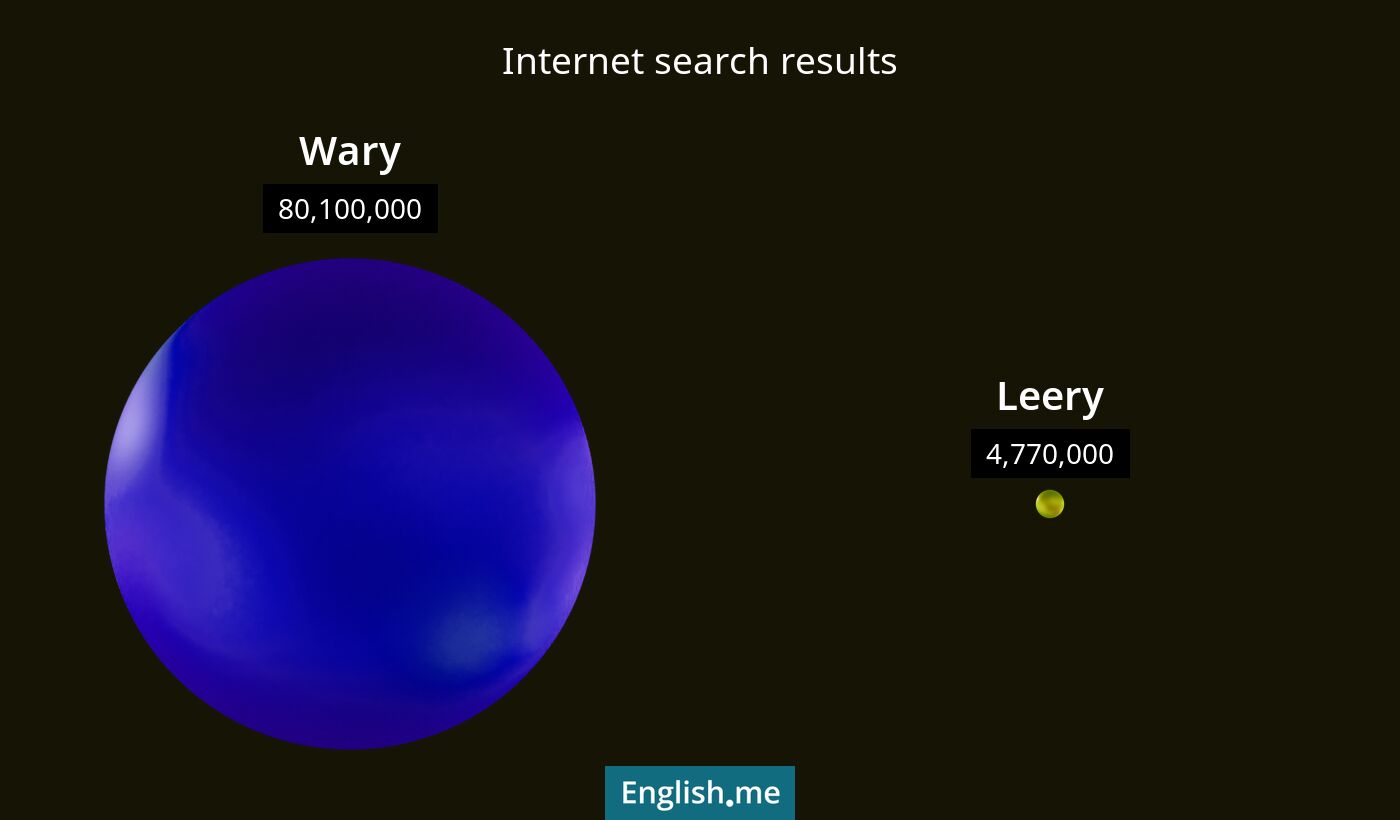Words in suspense: exploring "wary" vs. "leery"
Reviewed and edited by  Lloyd Cooper 21/10/2024, 19:02
Lloyd Cooper 21/10/2024, 19:02
English.me team member

 What is similar?
What is similar?
Both "wary" and "leery" describe a state of caution or suspicion towards something or someone. They are often used in contexts where there is a perceived need to be careful to avoid danger or trouble.
 What is different?
What is different?
While "wary" generally suggests alertness and watchfulness for potential problems or dangers, "leery" often implies a stronger degree of suspicion or mistrust. "Leery" can also carry a more informal tone compared to "wary".
 Which one is more common?
Which one is more common?

 Examples of usage
Examples of usage
Wary- She was wary of the stranger offering her a ride home.
- The cat was wary as it approached the unfamiliar object.
- Investors are wary of putting money into the volatile market.
- He was leery of the deal because it seemed too good to be true.
- Customers are leery of the new product due to past failures.
- She remained leery of his intentions despite his assurances.

 English
English español
español française
française italiano
italiano deutsche
deutsche 日本語
日本語 polski
polski česky
česky svenska
svenska Türkçe
Türkçe Nederlands
Nederlands